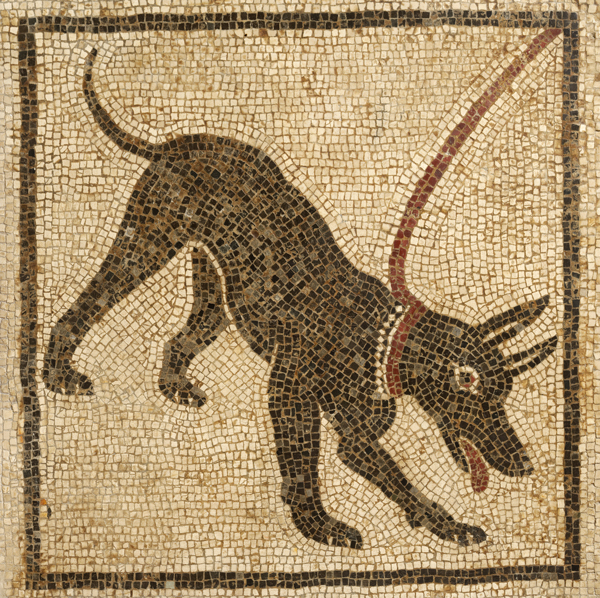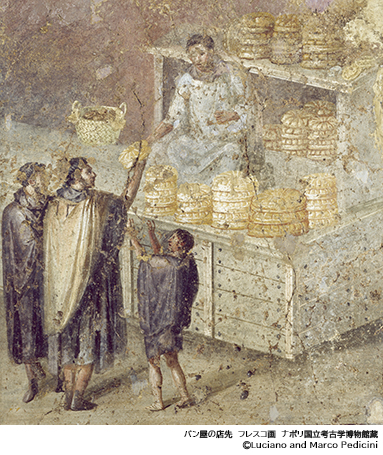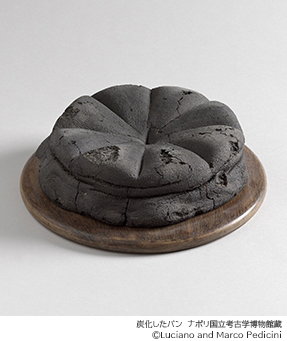Highlights of the Exhibition
Chapter 1 The city of Pompeiii: public architecture and religion
Chapter 2 Society and the people of Pompeii
Chapter 3 Daily life in Pompeii: food and work
Chapter 4 Pompeii: narratives of prosperity
Chapter 5 Excavations, then and now
Chapter 1 The city of Pompeiii: public architecture and religion
Pompeii was a medium-sized city that occupied an area measuring 1,600 meters east to west and 800 meters north to south. Two major thoroughfares ran east to west and another from north to south. The population at the time of the eruption has been estimated at around 10,000.
An indispensable feature of life in ancient Roman cities was the well-developed infrastructure and public facilities. Pompeii’s amenities included a forum (main square), theaters, amphitheater, baths, and palaestrae. Frescoes depicting scenes in the forum and amphitheater indicate they were well patronized. Clean water was channeled through the city to fountains, public baths, and the houses of the rich.
Several temples dedicated to Roman gods, where public rituals were enacted, stood close by the forum.
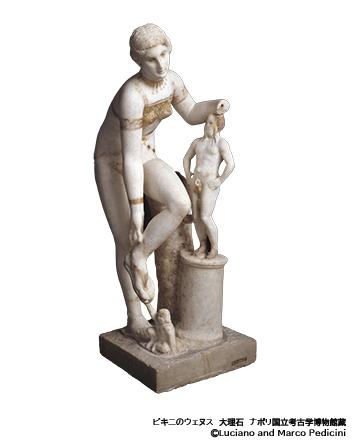 |
Venus in a bikini
H. 63cm
The statue represents Venus, the goddess of beauty, about to remove her sandal before bathing, assisted by Cupid and Priapus. Remnants of gold and other colors used for the costumes and accessories can still be seen. The figure stood beside a basin in the atrium of the residence that takes its name.
|
Page Top
Chapter 2 Society and the people of Pompeii
Wealthy citizens of Pompeii maintained residences sumptuously and elaborately decorated. For banquets, luxurious tableware was used. Household decorations and artifacts and the lifestyle that went with them indicate the importance that was attached at the time to behaving as an educated person conversant with Greek culture.
The city’s inhabitants also included many slaves. The glaring economic disparities notwithstanding, Pompeii’s class structure was not rigid; indeed, it was comparatively fluid by contemporary standards. The personal origins of the wealthy varied considerably: the family of a freedman who became rich from lending money and a woman who prospered by applying her skills in business are just two examples.
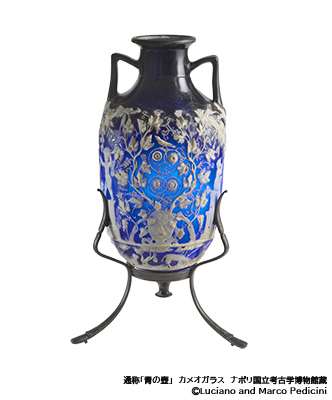 |
Small amphora with grape-harvesting motif (the "Blue Vase")
H. 32 cm
The cameo glass technique featured in this amphora involved the fusing of white glass onto cobalt-blue glass. The white layer was then etched to create intricate reliefs showing cupids engaging in grape harvesting and winemaking.
|
Page Top
Chapter 3 Daily life in Pompeii: food and work
Manufacture, construction, retailing, food and beverage provision, service businesses—Pompeiians engaged in a variety of occupations. More than 600 stores and workshops have been discovered during excavations in the city. Of course, there were also many street vendors, peddlers, and manual laborers. Numerous artifacts associated with technical skills, such as tools and instruments for carpentry, mural painting, and medicine, have been recovered.
Bakeries and restaurants provided takeout food, while the houses of the wealthy were equipped with kitchens where servants could prepare luxurious meals. In addition, many businesses engaged in the processing of agricultural and marine products; wine, olive oil, and garum (fish sauce) were among the major products sent out from Pompeii.
Pompeii is thought to have had a round thirty bakeries; this image appears to show one at a street corner. On the other hand, some scholars believe it depicts a magistrate handing out loaves of bread to the needy or even a political candidate campaigning for office.
Page Top
Chapter 4 Pompeii: narratives of prosperity
Pompeii largely evolved as a city in the second century BC, at the time of the Samnites. It maintained active contacts with the Eastern Mediterranean, which led to the penetration of Hellenistic culture. In 80 BC, an ascendant Rome colonized Pompeii, from which time the society and culture were washed over by waves of Romanization.
Objects and features unearthed at notable residences tell of Pompeii’s unfolding history: in the House of the Faun, dating back to the second century BC, a decorative mosaic considered among the finest in Hellenistic art; in the House of the Citharist, frescoes from the beginning of the golden age of Roman culture; and in the House of the Tragic Poet, frescoes painted only a short time before the eruption of Vesuvius.
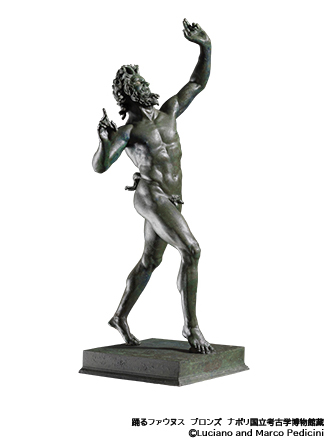 |
Dancing Faun
H. 71cm
This emblematic statue decorated the atrium of The House of the Faun. As it is an original work surviving from the Hellenistic period, the "faun" in fact is thought to be a satyr, a companion of the Greek god of wine Dionysus. The position of the hands suggests the figure originally held a silver aulos (double flute).
|
Page Top
Chapter 5 Excavations, then and now
This chapter deals with the history of excavations from the eighteenth century down to the present day, focusing on Herculaneum, Pompeii, and Somma Vesuviana, all of which were buried by eruptions of Mount Vesuvius. In the beginning, excavations were essentially “treasure hunts” for works of art; only later did they evolve into rigorous and careful scientific investigations. Since the 1960s, the preservation of remains has become a major issue, leading to strenuous efforts by researchers and specialist curators of cultural assets to conserve and restore the buildings and unearthed artifacts.
Page Top
*All the artworks are in the collection of the National Archaeological Museum of Naples.
Photos©Luciano and Marco Pedicini
![]() List of Works (1.06MB)
List of Works (1.06MB)![]()

